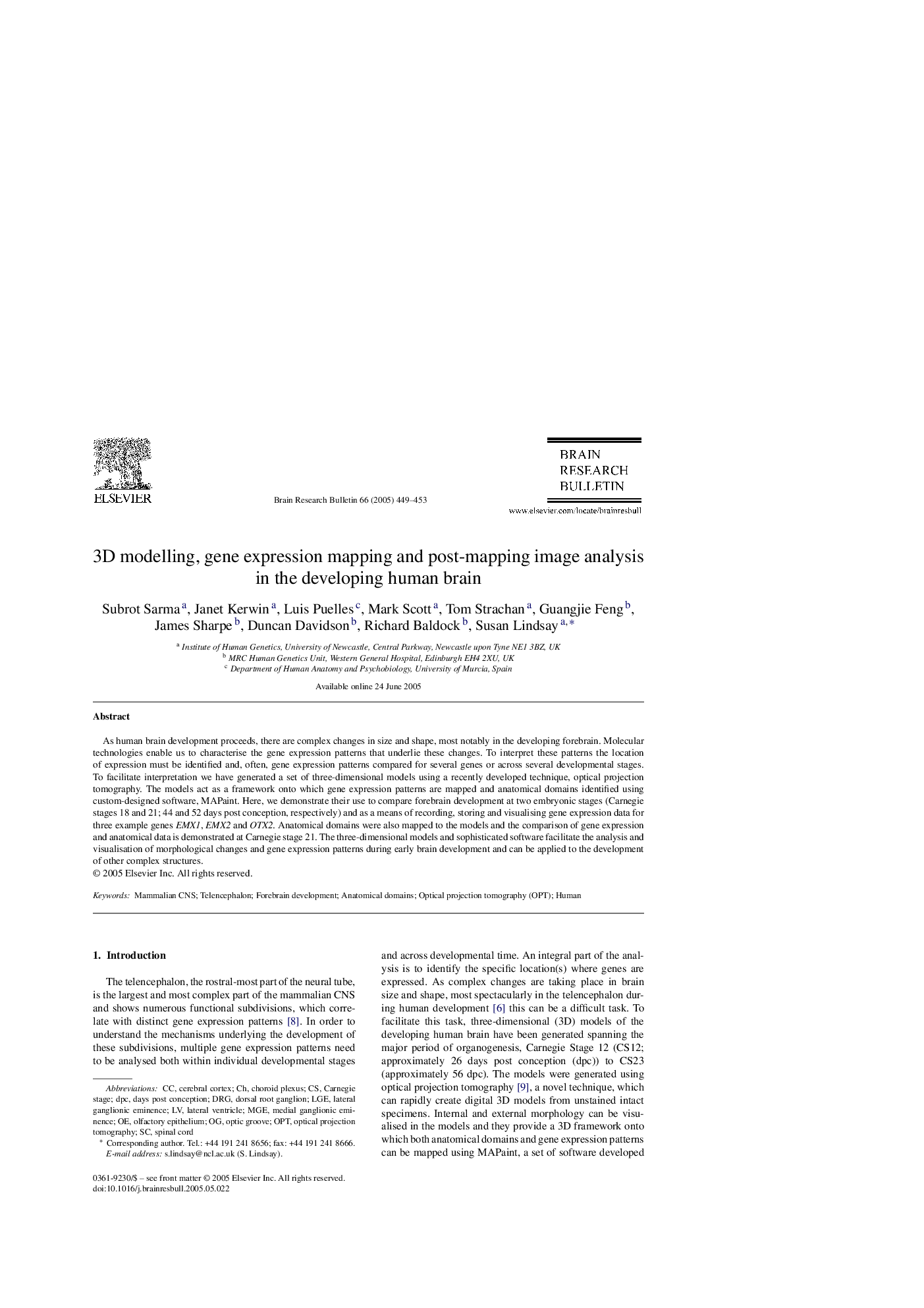| Article ID | Journal | Published Year | Pages | File Type |
|---|---|---|---|---|
| 9409442 | Brain Research Bulletin | 2005 | 5 Pages |
Abstract
As human brain development proceeds, there are complex changes in size and shape, most notably in the developing forebrain. Molecular technologies enable us to characterise the gene expression patterns that underlie these changes. To interpret these patterns the location of expression must be identified and, often, gene expression patterns compared for several genes or across several developmental stages. To facilitate interpretation we have generated a set of three-dimensional models using a recently developed technique, optical projection tomography. The models act as a framework onto which gene expression patterns are mapped and anatomical domains identified using custom-designed software, MAPaint. Here, we demonstrate their use to compare forebrain development at two embryonic stages (Carnegie stages 18 and 21; 44 and 52 days post conception, respectively) and as a means of recording, storing and visualising gene expression data for three example genes EMX1, EMX2 and OTX2. Anatomical domains were also mapped to the models and the comparison of gene expression and anatomical data is demonstrated at Carnegie stage 21. The three-dimensional models and sophisticated software facilitate the analysis and visualisation of morphological changes and gene expression patterns during early brain development and can be applied to the development of other complex structures.
Keywords
Related Topics
Life Sciences
Neuroscience
Cellular and Molecular Neuroscience
Authors
Subrot Sarma, Janet Kerwin, Luis Puelles, Mark Scott, Tom Strachan, Guangjie Feng, James Sharpe, Duncan Davidson, Richard Baldock, Susan Lindsay,
